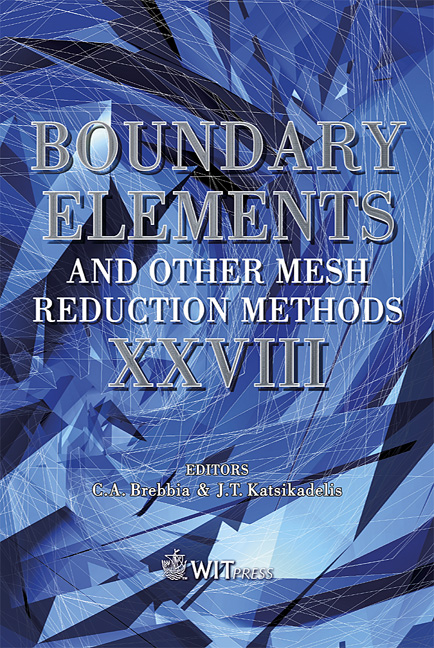The Meshless Analog Equation Method: A New Highly Accurate Truly Mesh-free Method For Solving Partial Differential Equations
Price
Free (open access)
Transaction
Volume
42
Pages
10
Published
2006
Size
649 kb
Paper DOI
10.2495/BEM060021
Copyright
WIT Press
Author(s)
J. T. Katsikadelis
Abstract
A new purely meshless method to solve PDEs is presented. The method is based on the concept of the analog equation of Katsikadelis, hence its name meshless analog equation method (MAEM), which converts the original equation into a simple solvable substitute one of the same order under a fictitious source. The fictitious source is represented by MQ-RBFS. Integration of the analog equation allows the approximation of the sought solution by new RBFs. Then inserting the solution into the PDE and BCs and collocating at the mesh-free nodal points yields a system of linear equations, which permit the evaluation of the expansion coefficients. The method exhibits key advantages of over other RBF collocation methods as it is highly accurate and the matrix of the resulting linear equations is always invertible. The accuracy is increased using optimal values of the shape parameters of the multiquadrics by minimizing the potential that produces the PDE. Without restricting its generality, the method is illustrated by applying it to the general second order elliptic PDE. The studied examples demonstrate the efficiency and high accuracy of the developed method. 1 Introduction The interest in mesh-free methods to solve PDEs has grown noticeably in the past 20 years. This is mainly due to the fact that (i) Mesh generation over complicated 2D and especially 3D domains is a very difficult problem and may require long time, in some cases weeks or months, to create a well behaved mesh (ii) The convergence rate of the traditional methods is of second order. The mesh-free MQ-RBFs (multiquadric radial basis functions) method developed by
Keywords





